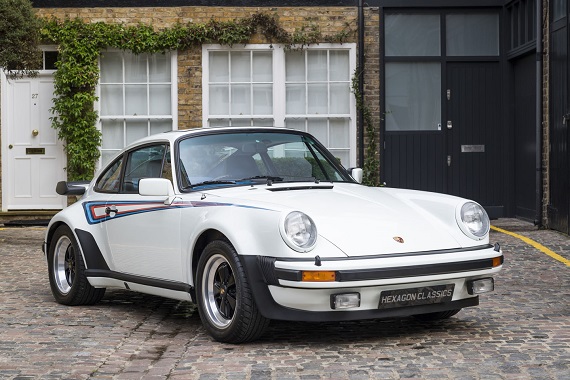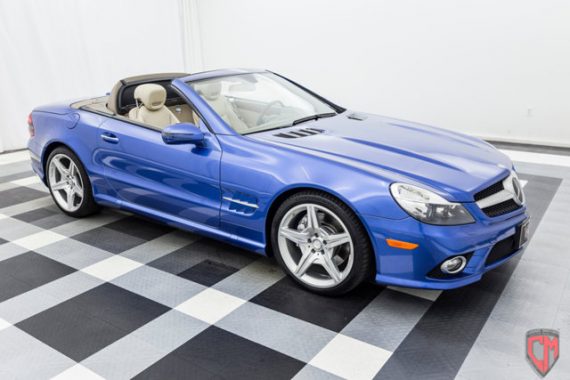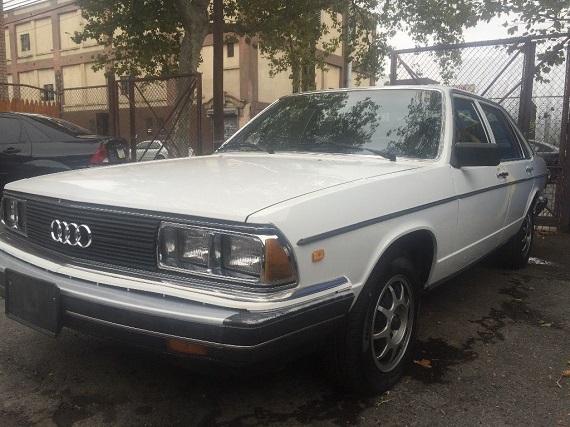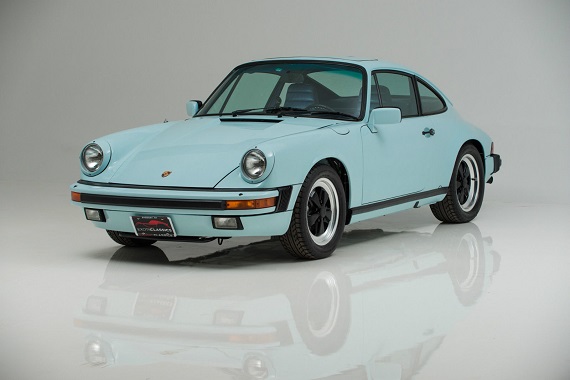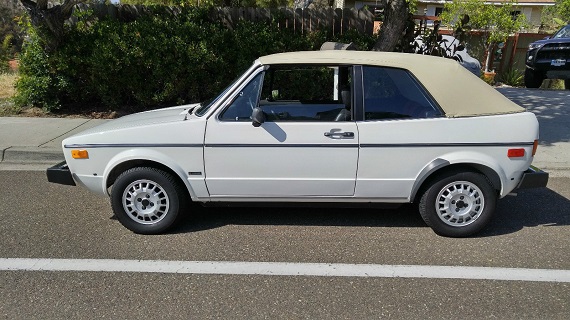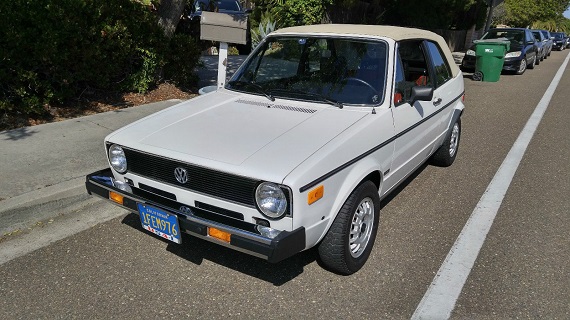Martini’s sponsorship is fairly well known in racing circles and the connection to Porsche has been solidified for decades. Naturally, Martini cosmetic packages have been around nearly as long. While mostly used by racers who desired a more bonafide appearance for their track cars, the graphics packages available from Porsche found their way to street cars as well. We’ve seen them on the 911SC and the 924. In some cases, if you had a chance to step inside one of those machines you might come across something truly special: a Martini package that included an interior treatment. These are wild and certainly not for the faint of heart. The most sought after of all were the packages applied to the 930. How many were there? The numbers don’t seem certain as I’ve seen suggestions ranging from three total all the way up to eight! As you can tell, regardless of the numbers there were very few of these genuine 930 Martini packages produced. The car we see here, a 1978 Porsche 930, purports to be one of those few. Whether it is can be hard to know for sure and we aren’t offered a lot here to validate those claims other than the reputation of a dealer that tends to traffic in some very high caliber vehicles. If it is the real deal, then this 930 not only should make for a wonderful edition to any Porsche collection, but it will also be quite valuable.
German Cars For Sale Blog Posts
The last year of the R230 SL in 2011 gave you a color choice of white, silver, gray, silver, gray, silver, black, black, black and two different shades of red if you wanted to really get wild. So when I saw one in Mauritius Blue it sure caught my attention. This wonderful SL550 for sale in North Carolina takes the normally bland color palette and adds a great color from it’s Designo program. So let’s take a closer look at this blue-blooded Mercedes-Benz.
CLICK FOR DETAILS:Â 2011 Mercedes-Benz SL550 on eBay
2 CommentsThe Type 43 Audi just isn’t something you run across every day. That’s because most are long gone; some had rust problems, but more suffered from depreciation such that a relatively minor repair could suddenly render the car worthless. Such is the case for today’s 1980 5000S, a car which ended up in an auction site likely because of a transmission falling to pieces. Yet someone saved today’s example, cleaned it up well and rebuilt the running gear, and now it’s set to remind show goers of an oft forgotten yet important page in Audi’s history:
CLICK FOR DETAILS: 1980 Audi 5000S on eBay
3 CommentsLet’s get right to it: I want to take a look at a very low mileage Glacier Blue 1984 Porsche 911 Carrera Coupe located in New York. Glacier Blue 911s have graced these pages a couple of times in the past and it’s a color that always draws attention. But here we start to see the fullness of its color to much better effect. The negative to a color like Glacier Blue is that in many lighting conditions it looks washed out, basically a dull white, and it is hard to capture the color so that it actually looks blue. They’ve done that here, perhaps through a combination of better photography and some touching up, but they’ve done it none the less. Combined with a navy blue interior we experience the full force of the color’s name: it’s appearance is icy like the waves of a cold sea crashing against a glacier. It’s a strange environment to model upon a car’s appearance, but it does produce a sort of natural look that is quite different from the typical earthy colors we associate with nature. As we’d expect the combination is quite rare – stated to be only 160 in this exterior color; no word on how many in this combination – and with only 19,615 miles on this one we also can expect a high price. But this high?
CLICK FOR DETAILS: 1984 Porsche 911 Carrera Coupe on eBay
4 CommentsThe product catalog for what Formula E is makes for a pretty hilarious read. “Passive Formula-E systems built in to your VW begin with an aerodynamic body design that cuts down on wind resistance.” Have you actually looked at a Rabbit? I guess in terms of footprint, it was physically smaller than a Chrysler Cordoba, so there’s that? But ‘aerodynamic’ is not the first thing I think of when I see an A1. It continues on touting the benefits of radial tires (Wooooow), a high-torque engine (compared to….?), and the George Costanza-inspired “breakerless transistorized ignition”. What it really was was a long 5th gear, denoted on Audis as the ‘4+E’ in the same year. What that meant was it spun the high-torque motor down to low revs, and that road better be pretty flat and not particularly windy if you’d like to maintain any speed. And, if you downshifted to pass anything or go the speed limit, immediately an arrow-shaped light would pop on the dash, reminding you that fuel was being wasted. But Volkswagen claimed it was good for 42 m.p.g. in a period still reeling from the fuel crises of the 1970s, and marketing is marketing.
What the Rabbit Convertible really offered you was one of the very few drop-top options in the early 1980s. Remember, this was a time when Detroit had pulled out of convertibles following hints they would be banned by the NHTSB. Japan didn’t really have much of anything on offer, either, as it hadn’t really established itself fully into the market in anything other than superb economy cars. And Germany? In 1982, you had two options – the Mercedes-Benz 380SL, or the Rabbit Convertible which had replaced the Beetle in 1980. That was it. In some ways, that makes these early Rabbits special, and though these Volkswagens were no where near as dear as the Daimlers, some who bought them treated them as royalty:

